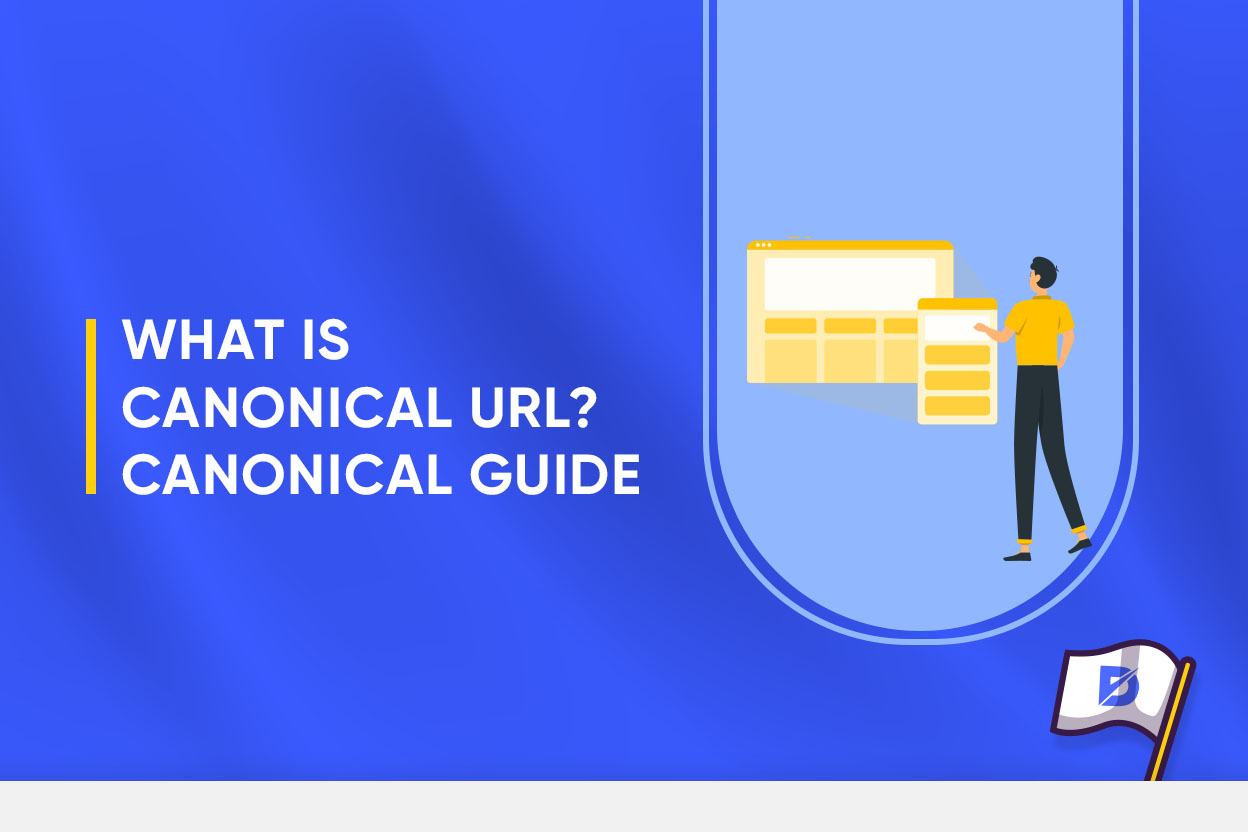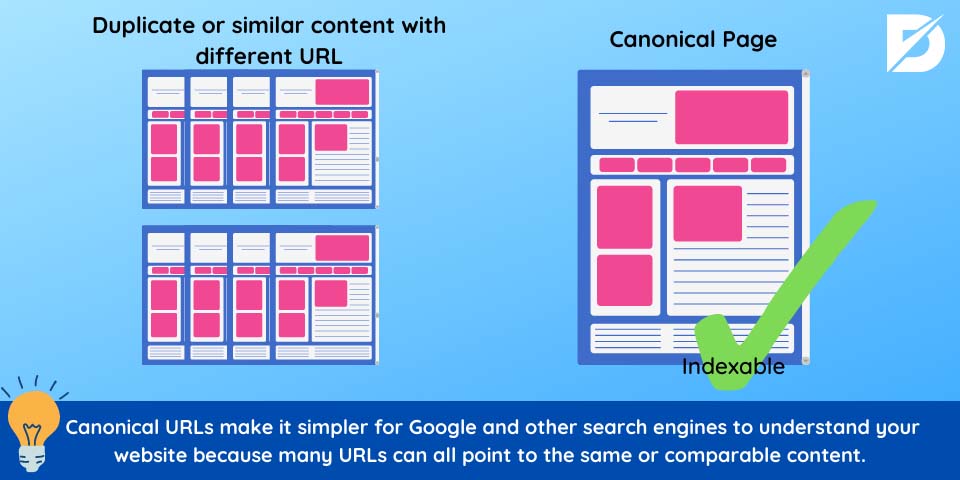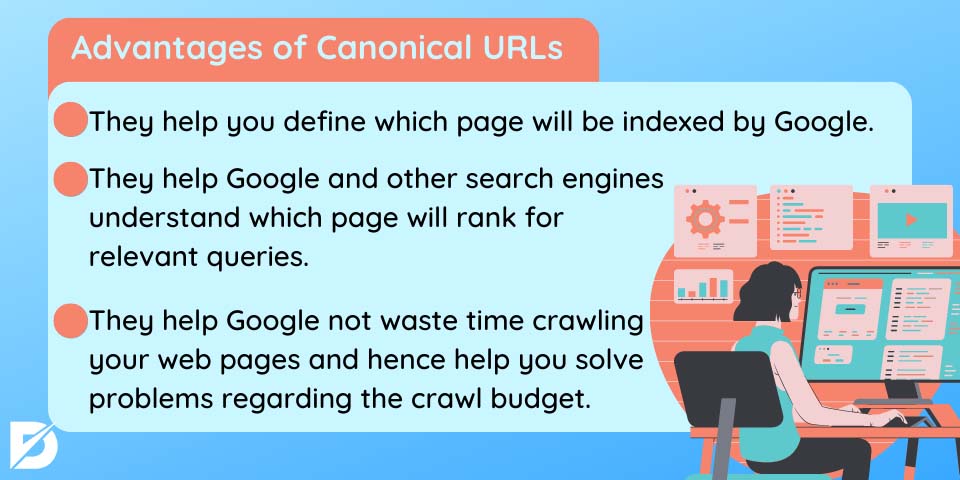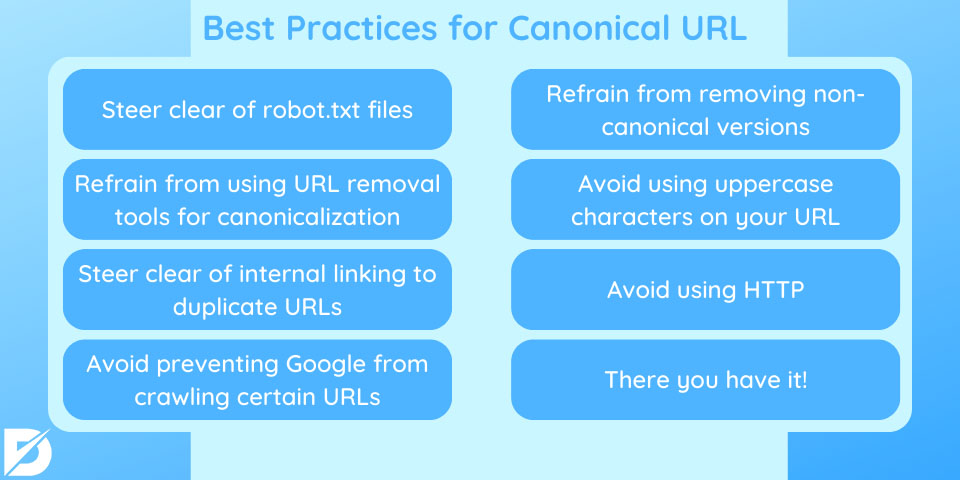What Is Canonical URL? Canonical Guide

There is no denying that Google dislikes duplicate pages. However, you might need to be made aware that you have repeatedly uploaded the same or closely related pages. Also, you may notice that your website is not displaying higher in search engine results and that you are not receiving the clicks you desire. Especially if you are working on your e-commerce site, this could cause problems. Google indexes URLs, not web pages, as you may already be aware if you are familiar with SEO. So, you must be careful about not having duplicate pages and provide Google with a way to decide what content to index on your website. How can I accomplish this? You may inquire. The answer is simple and pretty clear: by using Canonical URL.
Because of this, we will discuss the meaning of canonical URLs in this article. Also, we will give you instructions on how to add a canonical tag.
What Are Canonical Tags?
HTML canonical elements are used to specify which page is the canonical one for Google and other search engines. They describe identical pages, almost the same or similar. In a word, canonical tags enable you to specify the same or similar content under many URLs while facilitating the discovery and crawling of your website by Google and other search engines.
Consider there are four duplicate or similar pages with different URLs on your website. You might have less internet visibility and ranking if Google and other search engines do not deem something indexable, which could result in poor SEO. But if you use canonical tags, you can select the primary version—possibly the page that Google and other search engines index.
What Is a Canonical URL?
An HTML link element called a canonical URL, often referred to as a canonical tag, is typically located in a web page’s <head> element. The main purpose of a canonical URL is to tell Google and other search engines how to crawl your website and which pages to index.
As we already discussed, Canonical URLs make it simpler for Google and other search engines to understand your website because many URLs can all point to the same or comparable content. So, knowing the canonical URL is crucial if you work with SEO.

Canonical tags are positioned in the <head> section of a web page and have a simple and consistent syntax:
<link rel=“canonical” href=“https://example.com/sample-page/” />
link rel= “canonical” refers to the canonical version of the page, while the sample link href=https://ift.tt/t7DOVBS points out that the canonical version can be found within this URL.
Importance of Canonical Tags
Canonical tags are crucial in determining how effective your SEO work is. When different URLs refer to the same or similar material and site pages, it plays an essential role in preventing search engines from being confused. Canonical tags provide information about identical or similar URLs to Google and other search engines. By itself, this demonstrates how canonical tags work to address duplicate concerns.
Also, canonical tags assist you in indicating the URL you want users to see on search engine results pages (SERP). So, a canonical URL and tags help users comprehend the relationship between your web pages and define which sites should be indexed by Google and other search engines rather than a URL with special characters and difficult-to-understand links.
Why Should You Use Canonical Tags?
If you’ve read this far, you already know the advantages of Canonical URL for resolving duplicate page concerns and improving SEO. So let’s first examine what occurs when duplicate pages exist and canonical tags are not used.
You lose the benefit of being a unique content owner when you utilize the same content to describe your goods or services on your e-commerce site. Your content resembles that of your competitors and your other web pages. As a result, your content competes with both itself and your competitors.
Also, duplicate sites increase the likelihood that Google and other search engines may overlook your content and web pages. It implies that a web page you consider to be significant won’t be crawled and won’t even get to the indexing stage. And if you don’t do something to fix this problem, your website’s ranking will probably suffer.
Canonical tags are used instead of duplicate pages because of another factor, the crawl budget. Let’s face it. Having duplicate content significantly reduces the amount of money you can spend on crawls. Because Google has to spend much time crawling duplicate pages rather than just concentrating on your most crucial material.
We’ve now provided you with reasons for avoiding duplicate pages. Duplicate page concerns will make it difficult to identify your most crucial material, be found by Google and other search engines, and control the crawl budget. These problems may be resolved using canonical tags, which will boost your SEO.
Advantages of Canonical URLs
If you’re still unsure, consider these advantages of canonical URLs:

- They help you define which page will be indexed by Google.
- They help Google and other search engines understand which page will rank for relevant queries.
- They help Google not waste time crawling your web pages and hence help you solve problems regarding the crawl budget.
How to Implement the Canonical Tag
You could think that using canonical tags will be difficult. However, we can assure you that they are simpler to use than you might anticipate. To use canonical tags, all you have to do is include canonical URLs in your HTML code. You only need to use the “rel= “canonical” element in your page’s header by going to the head> section of your website.
Canonical tags are most frequently used with HTML tags (rel=canonical), HTTP Reader, sitemaps, and internal linking.
Of all these options, using HTML tags is the most common practice to implement canonical tags. By using rel= “canonical” HTML tags, you can simply add the following code to the <head> section of any duplicate page:
<link rel=“canonical” href=“https://example.com/canonical-page/” />
Let’s imagine you run an online store that sells books. A few of your URLs that point to the same product are similar to the ones below:
- https://ift.tt/R6uiJvE
- https://ift.tt/dyHVKC4
And you want https://ift.tt/eCywhmz be your canonical URL. To do so, simply add the following canonical tag to any duplicate pages you may have:
<link rel=“canonical” href=“https://yourstore.com/genres/fantasy-books/” />
Even though this is the most common and easy way to implement canonical tags, you can also use HTTP headers, sitemaps, and internal linking to put a canonical URL. You can use HTTP headers for documents like PDFs because there is no <head> section.
Also, as Google advises against including non-canonical URLs in sitemaps, you can use sitemaps to implement canonical URLs. On the other side, internal linking allows you to connect between pages on your website, which is a sign of canonicalization.
Best Practices for Canonical URL
Now that you know how to use canonical URLs, let’s look at some canonical URL best practices. Make sure you are utilizing canonical tags following these best practices:

- Steer clear of robot.txt files
- Refrain from using URL removal tools for canonicalization: Employing a URL removal tool for canonicalization is not advised since it will prevent Google from indexing your page because it will hide all variations of the URL from the search engines.
- Steer clear of internal linking to duplicate URLs: If you link to a duplicate URL, Google may not index your preferred URL. Thus, employ internal linking in favor of a canonical URL. Google might be able to grasp your choice if you use it frequently.
- Avoid preventing Google from crawling certain URLs: because doing so will prevent Google spiders from finding, crawling, or indexing your pages. To them, your page won’t be visible.
- Refrain from removing non-canonical versions: Include a 404 error page to alert users and enhance user experience if necessary. There is a trick to this, though. Avoid including non-canonical URLs in your sitemap, and refrain from setting your redirect as canonical.
- Avoid using uppercase characters on your URL: Use lowercase URLs rather than uppercase ones because Google might consider uppercase and lowercase URLs differently.
- Avoid using HTTP: As Google prefers HTTPS, it is advisable to utilize HTTPS for your canonical URL for Google to select it as the canonical URL.
- There you have it. You now know the best practices for Canonical tags. Let’s look at how they benefit you when Google chooses Canonical URLs.
How Google Chooses Canonical URLs
We utilize canonical URLs to tell Google which pages we want it to crawl and index. So that they can be crawled, indexed, and displayed on search engine results pages (SERP). We are giving Google a hint about our most significant pages. This is another factor in Google’s decision to utilize canonical URLs for its index.
Before making a decision, Google often responds to the following two queries:
- The question about the canonical URL we use: Which URL does the website want Google to use?
- The question about our duplicate pages: Which version of the URL looks more useful?
- You can send Google a few signals indicating your chosen canonical URL. You can add your chosen URL to the sitemap and use redirects, internal linking, and HTPPs format for your URLs. You can also put your desired URL on your links.
For Google to recognize your preferred URL as the most crucial, you must also use it constantly. After addressing the two crucial questions outlined above, Google may select an alternative canonical URL if you are inconsistent in your selection. Consistency is essential if you want Google to select your preferred URL as canonical.
Conclusion
In conclusion, in this article, we’ve explored the definition of canonical URLs and discussed the advantages of canonical URLs for your website’s SEO efforts. To apply canonical URLs to your website, we also looked into how to install them. We hope this essay has given you a better understanding of the significance and need for canonical URLs.
The post What Is Canonical URL? Canonical Guide appeared first on Dopinger Blog.
The post What Is Canonical URL? Canonical Guide is republished from Dopinger Blog
Yorumlar
Yorum Gönder